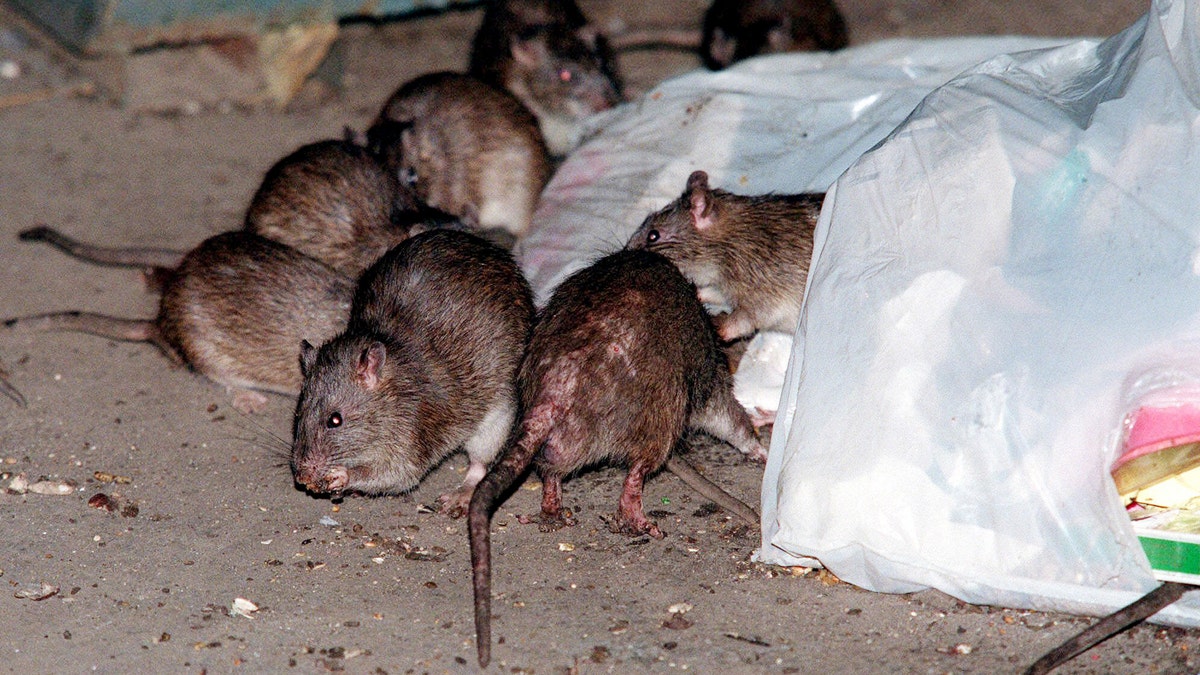
Rats swarm around a bag of garbage near a dumpster at the Baruch Houses in New York in this 2000 photo. (AP Photo/Robert Mecea)
In the event of a future mass extinction, rats may be the animals best suited to repopulate the world, some scientists say.
And if rats did "take over" after such a wipeout, they'd likely balloon in size, scientists also say.
Mass extinctions have hit the Earth at least five times in geologic history, most recently about 65 million years ago, when scientists think an asteroid hit the planet and wiped out the dinosaurs. Mammals took advantage of the newly available ecological space and ultimately repopulated and dominated the animal kingdom.
Some researchers think the Earth is on the brink of its next mass extinction that could hit within the next several centuries, as a result of human-induced habitat destruction and environmental degradation, said Jan Zalasiewicz, a geologist at the University of Leicester in the United Kingdom who studies Earth history. Just in the past several hundred years, thousands of animal species have become endangered, and hundreds have gone extinct, many as a result of human activity. [Wipe Out: History's 7 Most Mysterious Extinctions]
[pullquote]
Zalasiewicz and colleagues have developed a thought experiment in which they consider which animal might be the most likely to survive and repopulate the world if this purported mass extinction were to take place and they concluded that rats may be the best candidates.
The researchers based their hypothesis on rats' proven ability to infiltrate most major landmasses and islands on the planet, as well as their persistence throughout the world despite widespread attempts to control their populations. Other animals, such as cats and feral pigs, also do well in diverse ecosystems around the world, but they are not as widespread as rats. In the event of a mass extinction caused either by human activity or a catastrophic event, rats are theoretically the most likely mammals to be spared, given their wide extent and ability to cope in varied conditions, Zalasiewicz said.
The time frame of this purported rat takeover would be about 3 million to 10 million years from now, based on previous rates of repopulation after mass extinctions, Zalasiewicz said, so modern humans need not worry about an impending stampede of rodents. Even so, the researchers do suggest their findings could be a wake-up call for humans to take note of their own significant influence on the environment, and to consider how the world could change as a result of their actions.
"It's an illustration that shines light on the larger issue: that we are very quickly, as humans, altering conditions on Earth," Zalasiewicz told Live Science. "And that is remarkable and without precedent in Earth history."
Still, Zalasiewicz noted that the team's conclusion is simply a thought experiment, and cannot be tested experimentally.
"It's a guess; it's a thought experiment but it is based on the way that geology has operated in the past and the types of creatures that have been successful in the past," Zalasiewicz said.
As animals fill ecological space, they tend to become larger, just as mammals did when they evolved from the small critters that scampered at the feet of dinosaurs into the much larger organisms that now roam the planet. Zalasiewicz and colleagues think rats would also likely grow in size over the course of millions of years, and likely evolve in other unknown ways as well, Zalasiewicz said.
Copyright 2014 LiveScience, a TechMediaNetwork company. All rights reserved. This material may not be published, broadcast, rewritten or redistributed.